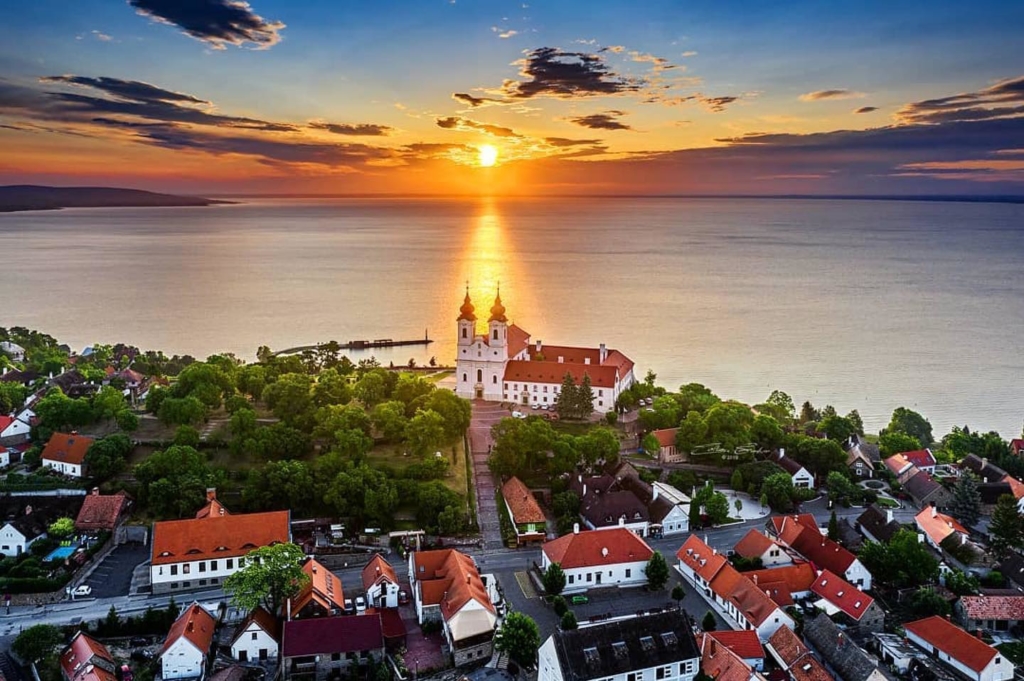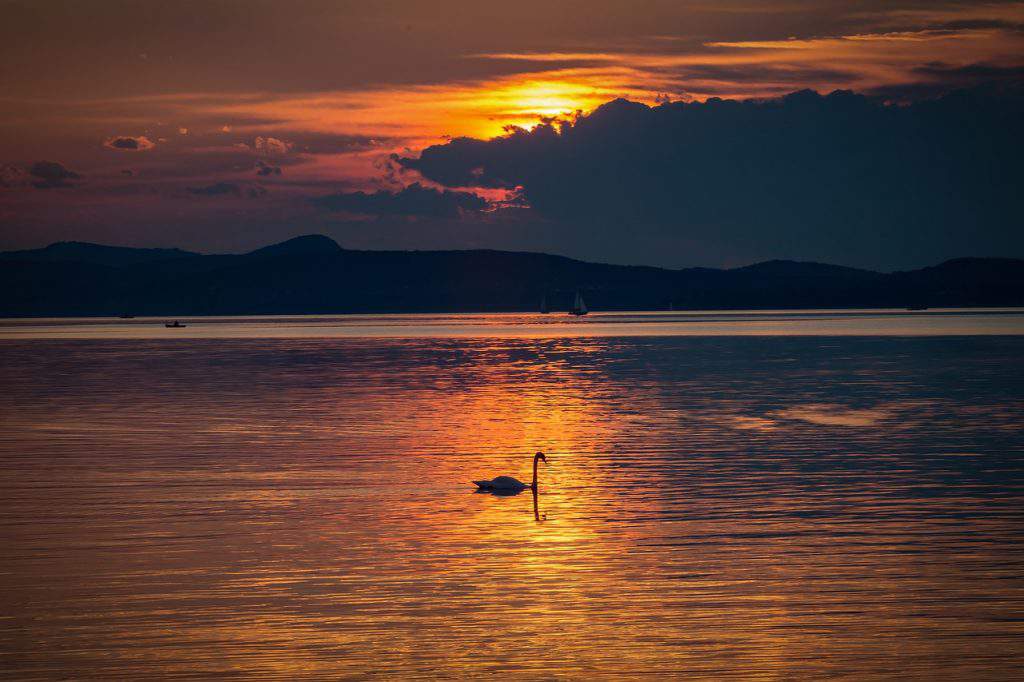10 interesting facts about Lake Balaton you need to know

I think many people would agree that 2020 was, by far, not the best year. Many people were stuck at home and could not travel anywhere, or even worse. And although the domestic vacationer’s main destination was Lake Balaton, we are sure that many foreigners miss the Hungarian sea, as it is nicknamed. Hopefully, with this article, we can remind you of pleasant memories and convince you to visit Lake Balaton when it will be possible.
As Szeretlek Magyarország wrote, people love the “Hungarian sea”, they like to play and swim in the water, walk on the shore, take photos at sunset, but most of the people have no idea how strange or special the things surrounding us truly are, so here are ten interesting things about Lake Balaton for you to impress other people with:
1 – Dimensions
Lake Balaton is the largest lake in Central Europe. Its length is 77 km, the smallest width is at Tihany, where it is only 1.5 km wide, while the longest distance between the two shores is at Balatonvilágos and Balatonalmádi, where the lake is 12.7 km wide. The surface of the lake is 600 km² in total. Lake Balaton’s deepest point is in the deepest ditch of the Tihanyi-szoros (Tihany Gorge), at the Tihanyi-kút (Tihany Well). There, the bottom of the lake is 11-12.5 metres deep.
If you are interested in what the water of the largest lake in Central Europe hides, then read our article about what lies on the bottom of Lake Balaton.
2 – Water volume
The total water volume of Lake Balaton is a whopping 1,800 million m³. Its entire water volume is replaced in 2.2 years. To provide its own fresh water supply, it has a total surface of 5,774 km² of drainage basin around the lake.

3 – Strange waves
It is somewhat strange for a lake to have waves as the Hungarian Lake Balaton does. Even just the wind is capable of quickly forming waves. The main reasons behind this are its relatively shallow depth and the low viscosity of the hot summer water. The predominant wind direction blows perpendicular to the lake, from the northwest.
The special effect of the mountains and valleys of the Balaton Uplands is that they cause the wind to “throb”. This throbbing is what causes periods of sudden waves and ripples in the lake, which is then followed by a wave-free period. Additionally, the waves are unusually steep for a lake: the highest waves measured were 1.82 metres near the shore and 1.95 metres in the middle of the lake. The length of the waves is usually between 2 to 12 metres. The water surface needs 2 hours for the furious waves to calm down after the wind has settled.
4 – Sunshine
Due to the special climate of the area, the number of hours of sunshine on the shores averages around 2,000 hours a year, and the sunniest month is June. During the summer season, on average, there are only 5-6 completely overcast days, and usually, the least rainy period is in August and September, with only six days each month when it rains.
While it is only January, and the summer season is not even on the horizon yet, you can still bring the summer spirit to your home by making some Hungarian dishes from around Lake Balaton.
5 – Forecasting
At Lake Balaton, the forecasting of storms officially started on July 8, 1934, on the initiative of Flight Colonel Alfréd Hille, the organiser of both the military and the civil aviation meteorological network.

6 – Eel haven
Although many species of fish live in its water, one of the special things about Lake Balaton is its eels. According to a 2010 study, the lake’s eel population is one of the oldest in Europe: the average age of eels living in Lake Balaton is 24.9 years.
7 – Swan Lake
Lake Balaton is not just favourable to eels, but it is also one of the most important waterbird habitats in Europe, with reeds providing nesting space for many different bird species. The largest flying bird living in and around Lake Balaton is the bütykös hattyú (mute swan). The bird builds a large floating nest in the reeds and often raises its cygnets near the beaches and promenades near the shore because the vacationers and beach-goers feed them regularly.
8 – Crossing
The birth of Hungarian swimming as organised sports is linked to Kálmán Szekrényessy. He was the first person to officially swim across the lake, crossing it between Siófok and Balatonfüred on August 29, 1880. For his honour, the birthday of Hungarian swimming is celebrated on August 29.

9 – There is chemistry
Many people say that the waters of Lake Balaton are velvety and soft, or silky and caressing. Nowadays, this can mostly be felt only on the open water towards the middle of the lake, but the composition of the water is unique: some even call it Balaton water. The water’s main characteristics are the following: pH 8.4, so it is alkaline, Ca content 27–80 mg/l, Mg content 35–48 mg/l, total salinity 280–320 mg/l, suspended solids content 2–123 mg/l, transparency 12–130 cm, and chemical oxygen demand (COD) 2.8–7.3 mg/l.
10 – Location
Lake Balaton is located in three counties: Somogy, Zala, and Veszprém counties. The lake and its surroundings belong to the Lake Balaton priority resort area and include a total of 179 settlements.
Source: Szeretlekmagyarország.hu





